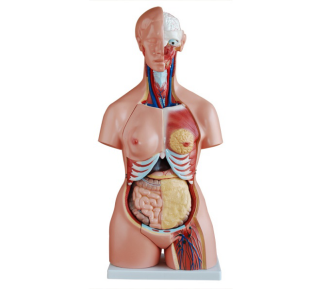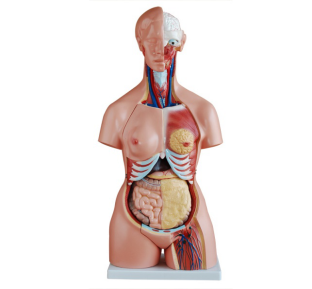ADA MED SUPPLY LIMITED
Phone:+86 19937901373
Tel:+86-0379-65160607
Email:adaanatomy@adaanatomy.com

Article tag: The Three-Sex Torso Model BIX-A1042 medical anatomy model

In medical teaching, anatomy is the foundation, while traditional teaching methods mainly rely on autopsy, imaging data and digital models. However, due to the shortage of cadaver sources, ethical problems and operational restrictions, cadaver teaching can no longer meet the needs of modern medical education. Three-sex trunk model (anatomical, pathological and physiological trunk model) came into being and became an important supplement to medical teaching. So, is this model an inevitable choice for medical teaching, or an optional aid?
Clinical significance: Improve anatomical cognition and diagnosis and treatment ability
The trisexual trunk model not only shows the normal anatomical structure, but also combines pathological changes and physiological functions, enabling medical students to master more medical knowledge in a limited time. The research shows that teaching combined with anatomical model can effectively improve students' spatial cognitive ability and make them adapt to image anatomy and operation faster in clinical practice.

In the fields of surgery, anesthesiology and imaging medicine, accurate anatomical knowledge directly affects the diagnosis and treatment results. For example, one study comparing the effects of traditional anatomy teaching with model teaching showed that students using the three-sex model improved their accuracy on anatomical knowledge tests by about 35% and improved the accuracy of clinical case analysis by more than 20%. In addition, the success rate of tracheal intubation, central venipentesis and other operations was significantly improved by anesthesiology and critical care physicians after using the model training, which helped reduce the occurrence of intraoperative complications.
Data support: Model teaching improves learning efficiency
Research in the field of medical education has shown that the use of high-quality 3D anatomical models can improve students' learning interest and efficiency. A survey of 300 medical students found that more than 80% of the students believe that model teaching is more intuitive and easier to understand than simple book learning, and the teaching method combined with the three-sex torso model has improved students' anatomy test scores by more than 30% on average.
In addition, the three sex model can also make up for the shortcomings of medical imaging teaching. For example, in radiology and ultrasound training, the use of models can help students more quickly understand the correspondence between images and actual anatomical structures, and improve the accuracy of imaging diagnosis.
Conclusion: The three-sex torso model is an indispensable teaching tool
In summary, the trisexual model not only plays an important role in basic medical education, but also can improve the diagnosis and treatment ability of medical personnel in clinical practice. Its advantages in improving spatial cognition, strengthening anatomical understanding and enhancing operational training make it an inevitable choice for modern medical education rather than an optional auxiliary tool.